Low-angle shots are like magical power-ups, making characters look strong and commanding. Imagine a superhero standing tall; that’s the vibe! On the flip side, high-angle shots can make someone seem small and vulnerable, like that time I tripped on stage! Directors use these angles to shape how we feel about the characters. Low angles pump up the drama, while high angles bring out sympathy, perfect for those heartfelt moments. Striking the right balance can elevate your storytelling, creating tension or connection. Stick around, and you’ll uncover even more tips to master these camera tricks!
Key Highlights
- Low-angle shots position the camera below the subject, conveying power and dominance, while high-angle shots look down, suggesting vulnerability and inferiority.
- Low angles evoke feelings of admiration and intimidation, whereas high angles can elicit sympathy and feelings of insignificance in characters.
- Low-angle shots enhance visual drama and can portray heroism, while high-angle shots often depict defeat or isolation.
- Directors use low angles to emphasize character strength and authority, while high angles are effective for highlighting struggles and emotional challenges.
- The choice of angle significantly influences audience perception, shaping the emotional tone and narrative depth of the scene.
Definition of Low-Angle Shots
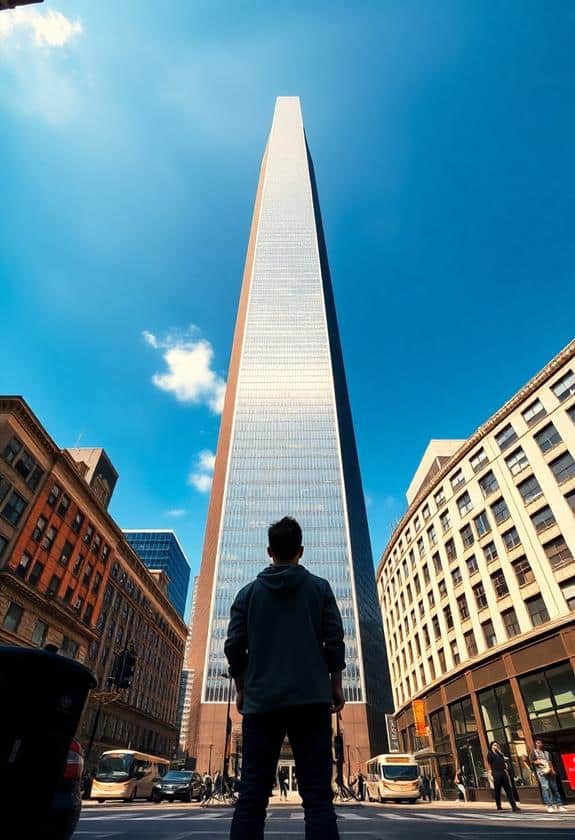
Low-angle shots are a powerful tool in cinematography that can dramatically influence how a subject is perceived. When you shoot from below, it makes your subject feel larger-than-life, giving them an air of authority or power. Think of those superhero movies where the camera captures the hero from below; it’s like you’re looking up to them, right? This technique can really make your audience feel the strength or importance of the character. Utilizing techniques like essential filmmaking equipment can help you achieve these shots effectively. Imagine you’re working on a school project, and you want to show a friend overcoming a challenge. If you use a low-angle shot, your friend will appear brave and heroic, almost like they’re conquering a mountain. It’s a simple shift in perspective that can change the whole vibe of your film. Just be careful—too many low-angle shots might feel exaggerated or silly, like you’re trying too hard.
Always remember to balance your shots. While low angles create drama, mix them with eye-level shots for a grounded approach. Filmmaking is all about experimenting and finding what works best for your story. So grab your camera, take a deep breath, and start creating!
Definition of High-Angle Shots

High-angle shots offer a unique perspective in cinematography, providing a sense of vulnerability or insignificance to the subject. Imagine yourself behind the camera, looking down on a character from above. This angle makes them appear smaller, almost like a child in a big world. It can really pull you into the story, helping you feel for that character as they face challenges. Utilizing the right essential gear for professional movie-making can elevate your high-angle shots, ensuring you capture every detail effectively.
When you use high-angle shots, you’re not just capturing a moment; you’re telling a story. For example, think about the last time you felt overwhelmed at school. A high-angle shot could perfectly capture that feeling, showing how small and lost you felt among your classmates. It’s a great technique to convey emotions without words.
But remember, while it may seem fun to play with angles, don’t forget about your subject’s comfort. Always be mindful of how they feel during filming. It’s all about creating a safe space for everyone involved. By embracing high-angle shots, you can enhance your storytelling, making your audience connect even more with your characters. So go ahead, grab that camera, and start experimenting with this powerful angle!
Emotional Impact of Angles
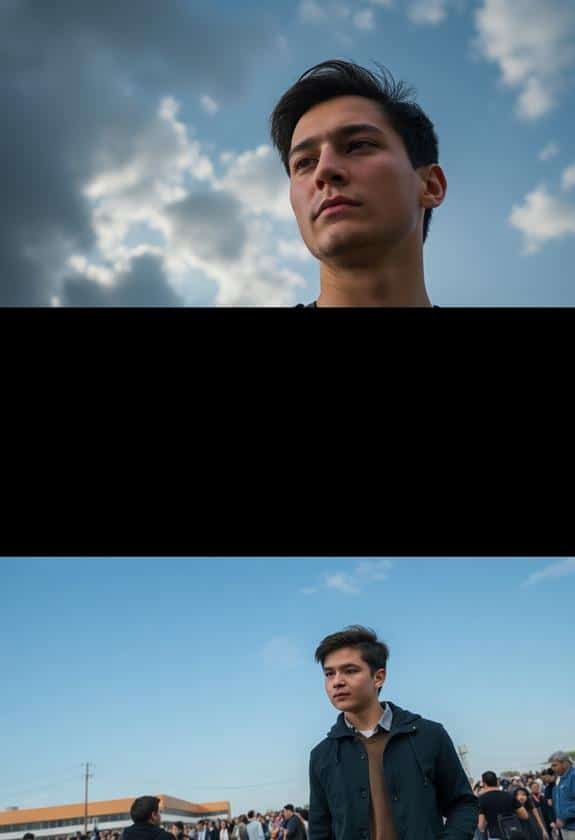
Angles in cinematography can profoundly affect the emotional tone of a scene. If you think about it, when you watch a movie, those angles shape how you feel about the characters. For instance, a low-angle shot can make a character seem powerful, almost like a superhero. You might find yourself rooting for them, feeling that rush of excitement as they take on challenges. Additionally, the right lighting gear, such as the Glide Gear BFS 100 Butterfly Scrim Diffuser, can enhance these angles by softening light and adding a professional touch. On the flip side, high-angle shots can evoke feelings of vulnerability. Imagine a character looking small and overwhelmed; it really tugs at your heartstrings, right?
I remember filming a scene with my friends where we used a high-angle shot to show our main character feeling lost. It was a simple choice, but it transformed the whole scene! Everyone felt the weight of that moment. So, when you’re working on your own projects, pay attention to how angles influence the emotions you want to convey. Experiment with low and high angles, and see how they change the mood. Trust me, you’ll be amazed at the difference! Filmmaking is all about sharing feelings, and angles are a powerful tool to help you do just that.
Common Uses in Filmmaking
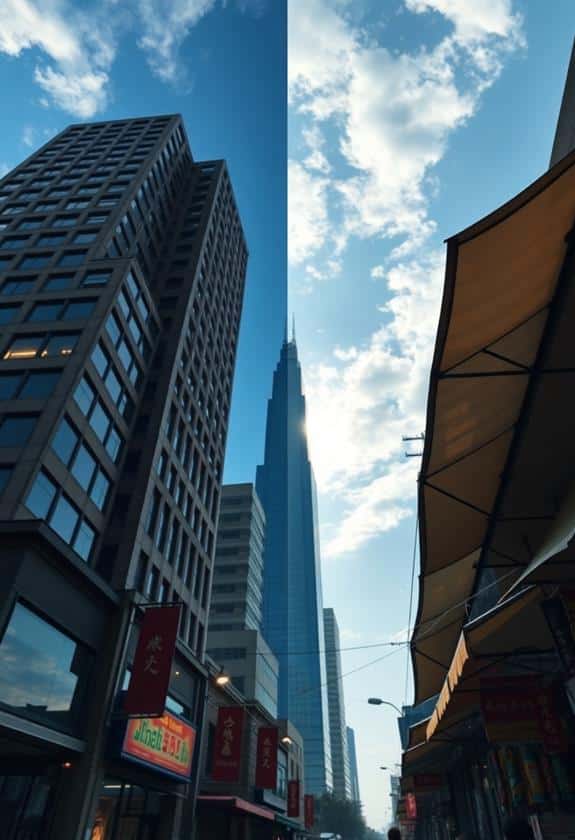
In many films, directors strategically employ low and high-angle shots to convey specific narrative elements and character dynamics. For instance, when you want to make a character seem powerful or intimidating, a low-angle shot can work wonders. Imagine filming a scene where a superhero stands tall against the skyline; that low angle makes them look larger than life, right? It’s like you’re looking up at them, feeling that rush of admiration. To capture these moments effectively, having the right gear is essential, and you can find some of the best cameras for filmmaking enthusiasts best filmmaking cameras.
On the other hand, high-angle shots can evoke vulnerability. Picture a scene with a frightened character in a dark alley. By shooting from above, you create a sense of helplessness, making the viewer empathize more. This technique is super effective, especially when you want to highlight a character’s struggle.
In my own filmmaking adventures, I’ve found that experimenting with these angles can add depth to your story. Don’t be afraid to play around! You might discover unique perspectives that resonate with your audience. So, grab your camera and start exploring! Just remember, whether you’re shooting low or high, the goal is to connect with viewers and tell a compelling story. Happy filming!
Visual Composition Techniques
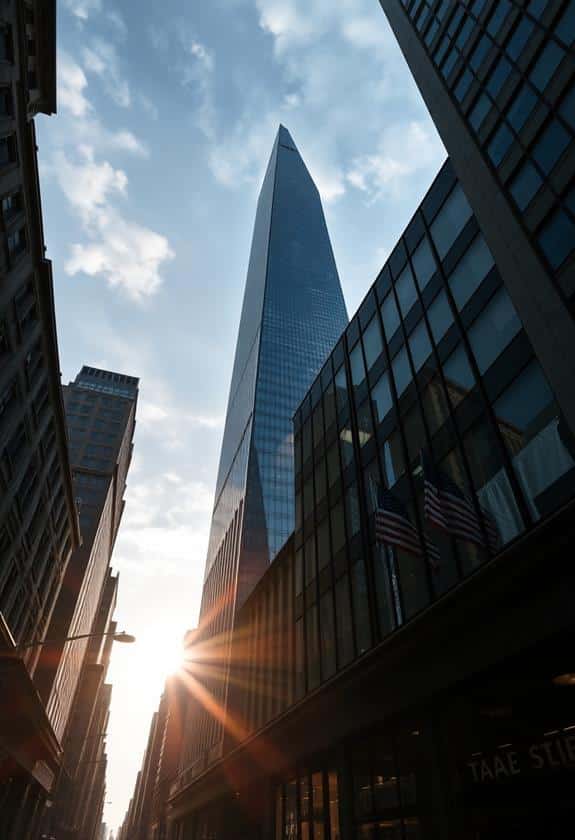
Visual composition plays an essential role in how audiences interpret a scene, and understanding techniques can elevate your filmmaking. When you’re filming, think about how you frame your shots. For instance, using lines in your composition can guide your viewer’s eyes. Imagine placing a character along a diagonal line; it adds energy and excitement! If you’re looking to capture stunning visuals, investing in top-quality cameras can greatly enhance your storytelling.
Also, consider the rule of thirds. By dividing your frame into a 3×3 grid, you can position your subject at the intersections for a balanced look. I remember my first short film, where I forgot this rule. My main character looked lost in the middle of the frame, and the scene felt flat. Trust me; it’s worth practicing!
Don’t overlook lighting, either. Soft, natural light can create a cozy vibe, while harsh shadows can add drama. Experiment with different angles—high or low—to see how they change the mood. You’ll find that a low-angle shot can make a character seem powerful, while a high angle can evoke vulnerability.
Examples From Notable Films
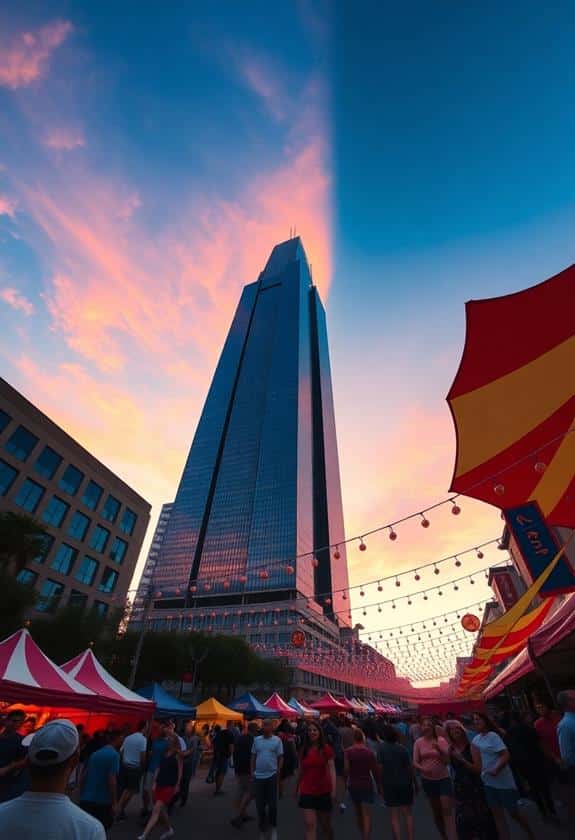
Filmmakers often use low and high-angle shots to convey specific emotions and character dynamics in their narratives. Take “The Lord of the Rings,” for instance. When you see Gandalf towering over Frodo, the low-angle shot makes Gandalf look powerful and wise, while Frodo appears small and vulnerable. It’s like standing next to a giant; you can’t help but feel a little intimidated!
On the flip side, think about “The Breakfast Club.” When the camera shows the group from a high angle, it emphasizes their isolation and vulnerability. You might feel like you’re looking down on them, creating a sense of empathy for their struggles.
These shots can shape your feelings about characters in profound ways. I remember being on a school project where we used low angles to make our hero look brave. It was a challenge, but seeing the final cut made all the effort worth it. So, next time you watch a movie, pay attention to these techniques. You might just find yourself feeling differently about the characters, and who knows? You might get inspired to create your own story!
Frequently Asked Questions
How Do Low and High Angle Shots Affect Viewer Perception?
Low and high-angle shots can really change how you see a scene! When you use a low-angle shot, it can make a character look powerful or intimidating, like a superhero standing tall. On the flip side, high-angle shots can make someone seem vulnerable or small like they’re facing a big challenge. It’s like when you’re at a concert; standing up front makes you feel like a star while sitting in the back feels different!
Can Angle Shots Influence Character Development in Storytelling?
Angle shots can really shape how you see a character. When you use a low angle, it makes them seem powerful and confident, like a superhero. On the flip side, a high angle can make them appear vulnerable or weak. I remember filming a scene where a character faced challenges; using a low-angle shot made them feel brave. So, play around with angles—it’s a fun way to boost character depth!
What Equipment Is Best for Capturing Low or High-Angle Shots?
When you’re gearing up to capture those stunning low or high-angle shots, think about using a tripod or a stabilizer. A tripod gives you that steady base, while a stabilizer helps you move smoothly, like a dancer on stage. If you’re feeling adventurous, don’t shy away from handheld shots! Just remember, safety first—watch your step! Experimenting with different equipment can really bring your vision to life and make your storytelling pop!
Are There Specific Genres That Favor Low or High Angle Shots?
Certain genres really shine with specific angles. For instance, horror films often use low-angle shots to make characters appear more menacing, while comedies might prefer high angles to create a sense of vulnerability or absurdity. I remember filming a short comedy, and using high angles made my friends look hilariously clumsy! So, when you’re planning your shots, think about how the angle can enhance your genre’s mood and message. It’s like magic!
How Do Lighting Conditions Change the Effectiveness of Angle Shots?
When you’re filming, lighting can really change how an angle shot feels. Imagine a low-angle shot in bright sunlight; it can make a subject look powerful and heroic. But, in dim light, that same angle might feel eerie or intimidating. I remember struggling with this during a project; the wrong light turned my brave hero into a shadowy figure! So, always consider your lighting—it’s the secret ingredient that shapes your story!
Conclusion
So, whether you’re aiming for a powerful low-angle shot that makes your character look like a superhero or a high-angle shot that shows vulnerability, both can transform your story. Did you know that 75% of viewers say they feel more immersed in a film when clever angles are used? That’s why experimenting with these techniques is so essential! Grab your camera, have fun, and remember: that every shot can tell a story that resonates with your audience.




